[ad_1]
The Kavango-Zambezi Transfrontier Conservation Area – or KAZA – is the world’s largest cross-border conservation park. Lauren Dold went to check out its ABCs.
A is for Africa’s Eden
The hope is that one day a single tourist visa will allow for easy movement around KAZA, but until then, it’s operations such as Africa’s Eden that can make travelling the region painless. Any SADC resident can join the Africa’s Eden Traveller’s Club, which gives members access to discounts on accommodation, flights and various extras all across KAZA. Annual club membership starts at $350.
africaseden.travel
B is for Bushtracks Africa
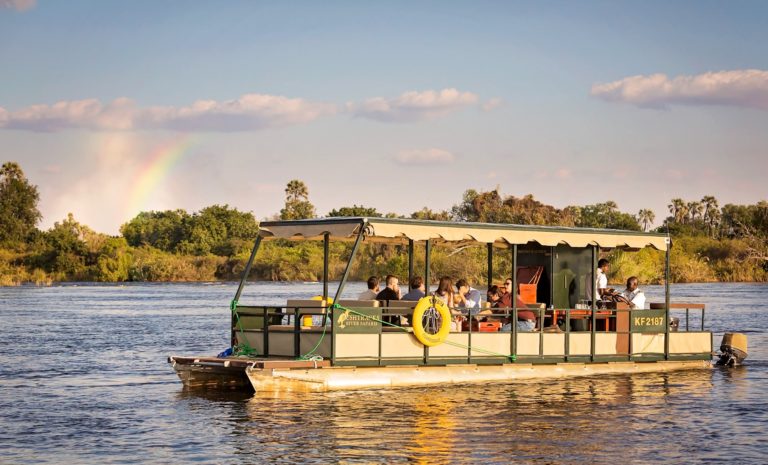
Here’s your answer to getting around KAZA in comfort and style. Bushtracks offers airport transfers, local tours, river cruises on the Zambezi and the Chobe, game drives and even a little choo-choo on the Bushtracks Express, a steam train that parks on the Victoria Falls Bridge at sunset.
bushtracksafrica.com
C is for Caprivi
Of all the random and baffling ways 19th-century colonialism carved up Africa, the Caprivi strip, now known as the Zambezi Region, must be one of the strangest. It was kind of an accident, and in fact, it only exists because some German negotiators forgot about one of the largest waterfalls in the world. Leo von Caprivi was the chancellor of Germany in 1890 and was responsible for negotiating land swaps with the UK. He signed away Zanzibar in exchange for Heligoland and this little strip of Bechuanaland, which Caprivi arranged to be annexed to German South West Africa to give Germany access to the Zambezi. It was a good plan, one that would link German South West Africa to its colony on the east coast, except for the pesky 108m drop that made the river unnavigable. So the Caprivi strip was useless for trade, and to add insult to injury, mineral-poor as well (as an expedition in 1909 proved). Now it is useful as an elephant corridor and tourist paradise, home to Bwabwata, Mudumu and Nkasa Rupara national parks.
C is also for Chobe
Did you know?
The Chobe River has five names, depending on where you are along its course. It’s called the Cuando where it begins in Angola, the Kwando when it reaches Namibia, then becomes the Linyanti when it enters Botswana; for a short stretch (70km) it’s the Itenge, then becomes known as the Chobe as it runs alongside Chobe National Park before it meets the Zambezi River at Kazungula. Here, a curious thing happens. From around February to May, the sheer volume of floodwaters from the Zambezi back up for a considerable distance, creating the impression that the Chobe changes direction.
D is for Devil’s Pool
A dip in the notorious Devil’s Pool is a thrilling experience, although it really doesn’t deserve the notoriety its name suggests. Although you may be disturbed by the guide’s instruction – just before you dive in – to ‘swim in this direction because if you go that way, you’ll go over the edge and all the way to the Indian Ocean’. Only accessible when water levels aren’t too high, the pool is reached via a slightly slippery walk over the rocks and then a bit of a swim before you get to the point where you slide (or jump or dive) into a natural Jacuzzi-like pool where you get to hang out for a bit within metres of a point where water is cascading into the depths below.
From $100 pp including breakfast, brunch or lunch
devilspool.net
E is for Elephant
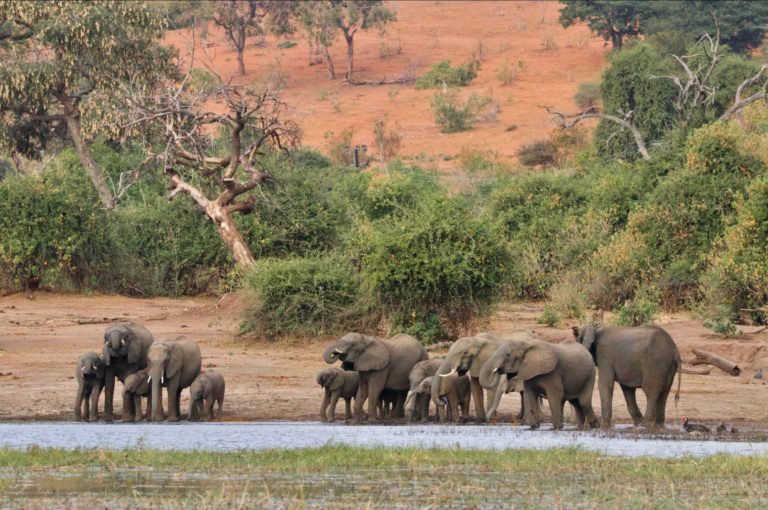
KAZA is home to almost half the continent’s elephants. At about 300 000-strong, KAZA’s elephants form the largest continuous transboundary population on Earth. In Hwange National Park in Zimbabwe, thirsty elephants arrive in numbers from Botswana, making use of solar-powered waterholes during the dry season. During this time, Hwange’s elephant numbers swell to well over their usual 25 000, and visitors to the park can expect to see hundreds of elephants a day.
Historically, Angola was a stronghold on the migratory route of southern African elephants, but decades of war and poaching have left parts of the country completely elephant-less. It is hoped that a few thousand elephants will move through corridors into Angola, which will take the pressure off elephant-crowded northern Botswana.
The high concentration of elephants in KAZA means fairly frequent human-elephant conflict. In the eastern Okavango Panhandle, elephants outnumber humans, where they compete for food, water and land. Crop-raiding elephants destroy the livelihoods of farmers, while children must brave elephant corridors on their way to school. Numerous projects in the region attempt to mitigate these problems by encouraging farming inside fenced cluster fields, and providing “Elephant Express Buses” to help people travel safely.
F is for Flight of Angels
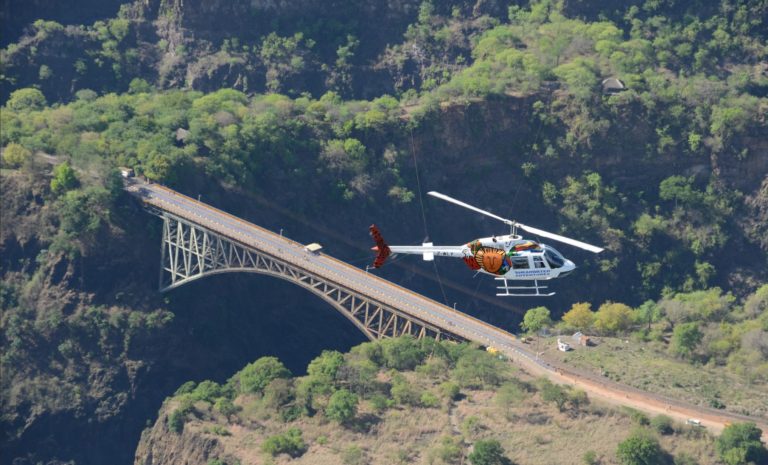
Legend has it that when David Livingstone set eyes upon the smoke that thunders, he said: ‘Scenes so lovely must have been gazed upon by angels in their flight.’ Indeed, Victoria Falls is spectacular from just about any angle, but the ultimate view – of the waterfall and the surrounding landscape and the Zambezi River racing towards the spillover point – is hands-down from a helicopter.
With Shearwater Adventures, you can take a 15-minute spin over the Falls – it’s the company’s so-called “Flight of the Angels”, with multi-angled views of the plummeting water and spray and of the Batoka Gorge, plus a portion of Zambezi National Park. Shearwater’s helipad is five minutes from town, the closest to the Falls, and it offers a pick-up service from nearby accommodation.
Flights from $150
shearwatervictoriafalls.com
G is for Geological upheaval
The wonder of KAZA has been in the making for millions of years. Time, geology and water have been working together for aeons, finally culminating in the glorious outcome that is Africa’s own Eden today. Geological upheavals 15 million years ago caused a shift in river systems, a catalyst that set in motion the forming of the vast Lake Makgadikgadi (now the dry salt pans), which, in its time, was even larger than present-day Lake Victoria. At this time, the upper and lower Zambezi were two separate rivers, until the middle Zambezi eroded back to the ancient Lake Makgadikgadi, triggering a massive flood, which carved the Batoka Gorge. From that moment, the Falls began to trickle and now, millions of years later, Mosi-oa-Tunya smokes and thunders.
H is for Highwire lunacy
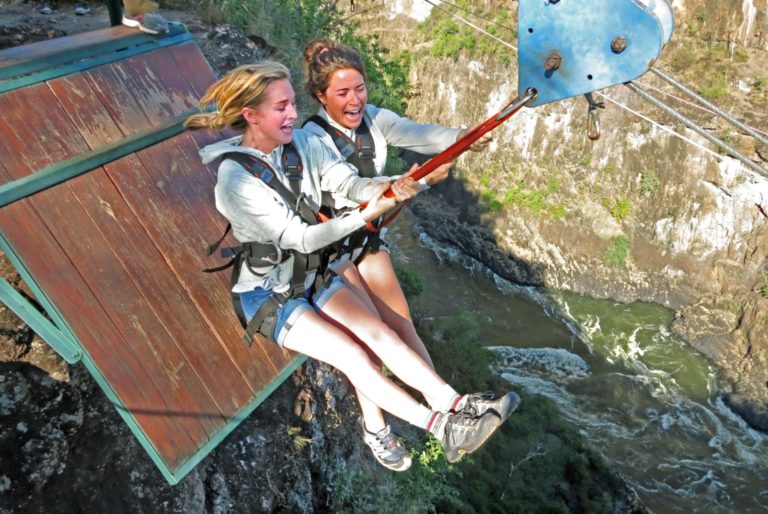
If you’re looking for adventures that’ll blow your hair back, zipping across Batoka Gorge at 100km/h ought to do it. Suspended some 120m above the Zambezi, the 425m zipline is one of the longest of its kind in the world, and its owners, Wild Horizons, have other hair-raising highwire adventures on offer, too, including a gorge swing, which is a bit like bungee jumping except you’re not suspended upside down by the feet, and the slightly more conservative flying fox, a horizontal cable slide. Bring closed shoes, a hair tie, and a bit of bravery.
Starting at $83
wildhorizons.co.za
I is for Ilala Lodge Hotel
When it comes to central accommodation in Vic Falls, Ilala Lodge Hotel on the edge of town is one of the closest lodges to the waterfall. It’s ideal for business travellers, with all the furnishings of a hotel but with the quiet feel of a lodge, complete with impala and warthog grazing on the lawn.
From $135 pp pn sharing
Ilalalodge.com
J is for Jollyboys Backpackers
There’s no other word for it, Jollyboys in Livingstone is lekker. It’s a backpackers, but not the seedy kind of gap-years past. Owner-run and managed, and open since 1996, it’s a wallet-friendly option for travellers looking to meet people, adventure and explore the lesser-known side of the Falls. Digs vary from private en suite rooms to traditional dormitories and a spot on the lawn where you can pitch your own tent. There’s a pool and bar, kitchen facilities, a braai area and off-street parking.
$9 per campsite, $18 pp sharing in a dorm, $68 for a single en suite room
backpackzambia.com
K is for Kazungula Bridge
Linking Zambia and Botswana, this $259-million project was completed in late 2020 and opened in mid-2021, finally putting an end to the reliance on pontoons to cross the river. It is 923m long and there are about 250 truck crossings a day, with two car lanes in each direction, a single rail track and pedestrian walkways on either side. Included in the project are two one-stop border posts, one on each side of the Zambia-Botswana border. This means travellers only have to stop once, in the exit country. Even during the height of PCR tests and Covid paranoia, it was a dream to move through these border posts.
L is for Languages
KAZA is home to many mother tongues, and local people of the region usually speak more than three languages or dialects, but English is used across the countries. With more than 70 tribes and even more vernaculars in Zambia alone, 16 official languages in Zimbabwe, 13 in Namibia and 20 lesser-known languages spoken in Botswana (apart from Setswana), there are uncountable languages and dialects in KAZA. What is called nshima (mealie meal) in Livingstone, is called sadza across the bridge in Victoria Falls and the same in Botswana, while Namibians may call it pap or inkoko. It’s worth making an effort to learn to greet and thank in whichever region of KAZA you may visit. Even David Livingstone became fluent in Setswana.
M is for Mosi-oa-Tunya
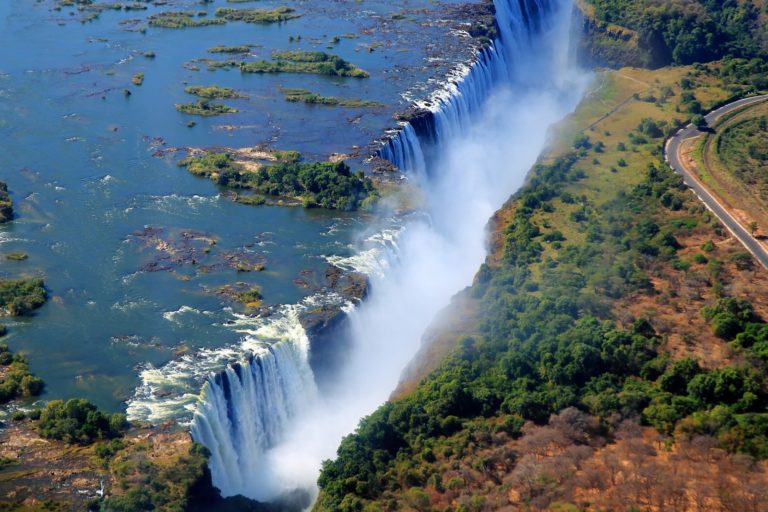
Or “the smoke that thunders” in the Kololo and Lozi languages, the pre-colonial name given to the world’s greatest sheet of falling water. One of the seven natural world wonders, it is roughly twice the height of Niagara Falls, at 108m tall, and is 1 708m wide. In the high-water season, 500 million litres cascade over the Falls every minute (that’s equivalent to 200 Olympic-sized swimming pools of water being tossed over the edge every 60 seconds). In 2019, about one million people visited Victoria Falls. In 2020, between January and June, a mere 14 000 tourists were recorded.
N is for Nyami Nyami
The Tonga tribe of the Zambezi Valley has long believed that a god lives among them, and his name is Nyami Nyami. He is the god of the River Zambezi, often portrayed as a creature with the body of a snake and the head of a fish in local crafts. It is said that Nyami Nyami lived under a rock close to the present-day Kariba Dam wall, and no one would venture near that spot. They called the rock Kariwa, “the trap” (hence the name Kariba). In 1956, construction on the Kariba Dam began, and heavy earth-moving equipment rolled into the valley. The BaTonga were unhappily displaced, but they went with the knowledge that Nyami Nyami would not take this nonsense lying down. In 1957, when the dam wall was near completion, the worst floods in recent history washed much of the dam and equipment away. City-dwellers mocked the legend of Nyami Nyami, but by 1958 that mockery turned to chilled apprehension, when floods not predicted for the next 1 000 years tore through the valley, surpassing levels of the previous years’ devastating floods. The 1958 floods destroyed the coffer dam, the access bridge and parts of the main wall. Despite the setbacks, the project survived and in 1960, the generators were switched on and have been supplying power to Zambia and Zimbabwe ever since. Today, tremors in and around the Zambezi rumble through the valley every now and then, and who’s to say whether that’s from the mass of Lake Kariba pressing down on the earth, or the wrath of Nyami Nyami, still angry about the displacement.
O is for Old Drift Lodge
There are few things more luxurious than taking a hot bath on the banks of the Zambezi, but at Old Drift, that’s part of the daily routine. You may even have to shoo away an elephant as they often drink out of the private splash pools at each suite. Old Drift is named for Clarke’s Drift, a narrow crossing point on the Zambezi that became a settlement in the early 1900s, later abandoned and reclaimed by the bush. Today, the bush still holds power over the land, as the camp is unfenced and the 14 tents are spread far apart enough that hippos and elephants wander between them at night. (Guests are escorted to their rooms after dark). The camp can be accessed via road through Zambezi National Park, or via the river itself.
From $552 pp sharing, excluding $15 daily conservation levy
olddriftlodge.com
P is for Pangolin Photo Safaris
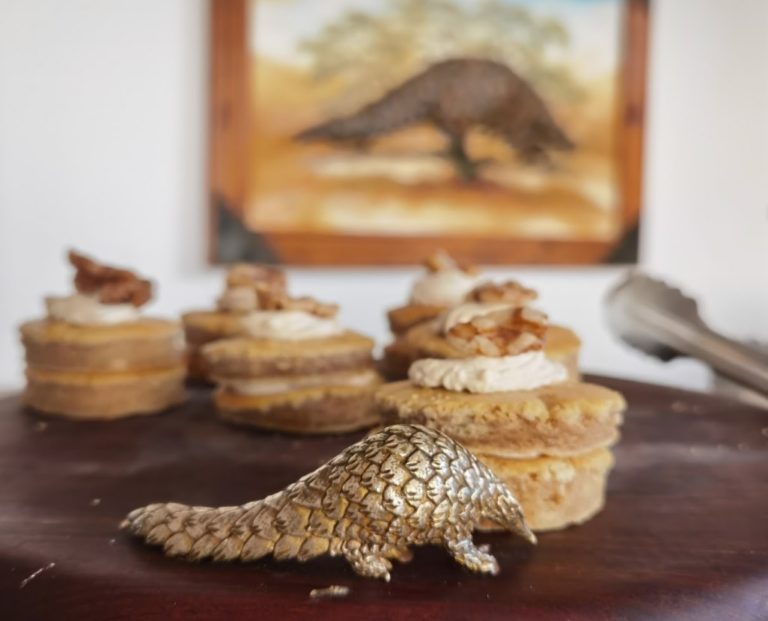
One of the most unusual offerings in KAZA, Pangolin Photo Safaris has three accommodation options: the signature lodge in Kasane, the Voyager houseboat and the seasonal mobile safari camp. At each, photographic safaris and packages are offered, and guests are supplied with cameras, lenses, memory cards and expertise, as well as equipment and space to edit photos later. Pangolin has a specially equipped boat with swivelling chairs and camera mounts so you can take photos from the middle of the Chobe. The lodge in Kasane is even built in the shape of a pangolin, and while it’s not furnished like a typical safari lodge, it is a wildlife photographer’s dream.
From $475 pp
pangolinphoto.com
Q is for Quadripoint
The only place on Earth where four countries meet. There are more than 150 tripoints in the world where three countries meet, but only one quadripoint, right in the middle of the Zambezi. Pedantic map-readers may point out that it’s actually two tri-points very close together, but KAZA will claim it as the closest thing to a quadripoint on Earth.
R is for the River Brewing Co
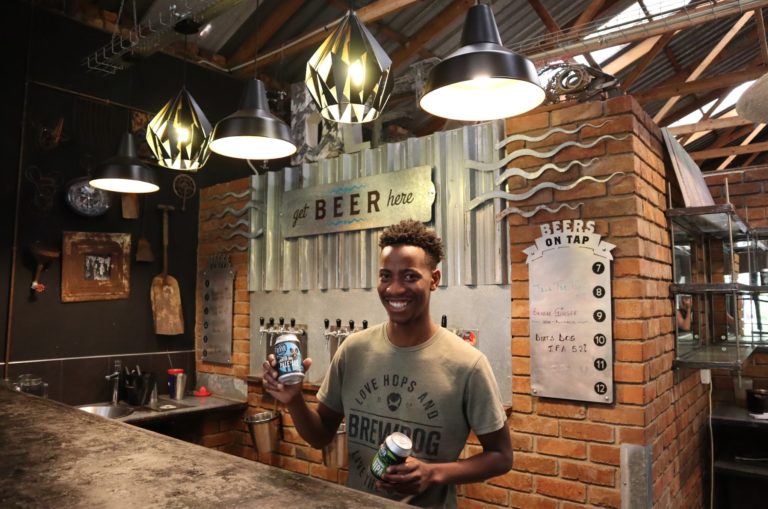
What do you get when you cross an iconic African river, a spectacular waterfall and a group of dedicated craft brewers (including a bloke from Alaska)? You get craft beers served at Victoria Falls’ biggest micro-brewery, where you can sip on a KAZA Blond or a Painted Dog Pale Ale, or perhaps a Siyabonga Session IP – each is “brewed from pure Zambezi water and the finest German malted barley and hops”. You’ll find tasty food, too, plus night-time live music and shows by stand-up comedians. And the beers are served at eight other locations around Vic Falls, including the Lookout Cafe and Shearwater Explorers Village.
riverbrewco.com
S is for Sechele
Whether we like it or not, the recent history of the Zambezi and Victoria Falls will always be tied up with that intrepid explorer Livingstone, by all accounts one of history’s most useless missionaries.
His grand total of successful conversions to Christianity is one; his name was Sechele, and he became a preacher and leader of African Christianity, to the great annoyance of European missionaries. He would become the chief, or kgosi of the Bakwena, part of the Tswana people in modern Botswana, and by the time he died in 1892, Sechele had done more to spread Christianity in 19th-century southern Africa than most European missionaries.
Livingstone’s sighting and reporting of what he then called Victoria Falls would come to define his life, overshadowing his missionary and explorative failures. (He never did find the source of the Nile.)
For a most riveting account of Livingstone’s life, book a tour with Clive Wakefield, an extremely talented storyteller and local Zimbabwean guide +26 (0)37 7 266 1226
T is for Treetops Bar
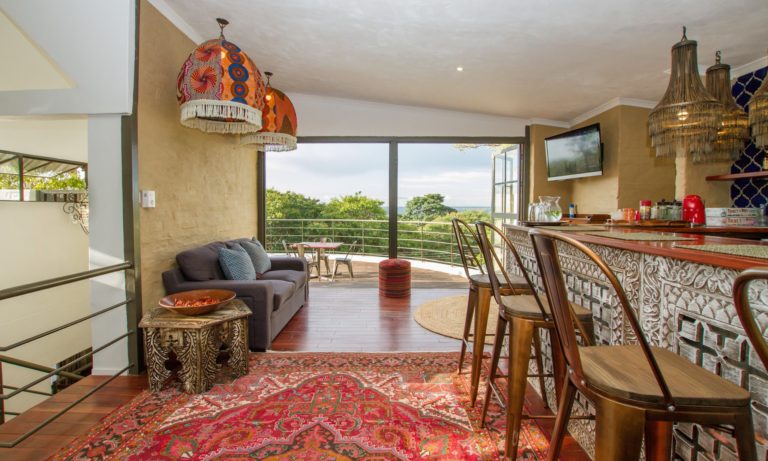
There is no shortage of hotel and lodge accommodation in Vic Falls, but for those who prefer a quieter, more low-key stay, 528 Victoria Falls is a homely boutique guest house in a leafy suburb of the town itself. It has seven en suite rooms, all complete with beautiful Zimbabwean art and quirky wallpaper. Owners Paul and Meredith are lovely and attentive hosts, and will proudly show you to their “Treetops” bar with views of the not-so-distant Zambezi, and will gladly help with travel and activity arrangements.
From $140 pp pn sharing B&B
528victoriafalls.com
U is for Unesco’s darlings
KAZA is home to three Unesco World Heritage sites. Well-known is Mosi-oa-Tunya and the Okavango Delta, but there’s also the lesser-known Tsodilo Hills in northwest Botswana. To be included on the World Heritage list, sites must be of outstanding universal value and meet at least one out of 10 selection criteria.
V is for Vulture restaurant
It’s a fairly smelly and dusty affair – vultures are not known for their table manners – but it’s worth taking the time to visit one of KAZA’s vulture restaurants to learn about their plight. Every day at about noon, vultures begin to circle Vic Falls Safari Lodge; by 1 pm, they’ve descended on the scraps of meat laid out for them. It seems strange to feed wild birds, but it is a useful way to keep track of the local vulture population, which is under threat. Poachers poison carcasses to kill vultures that otherwise give away the position of a poaching site. A single poisoning event can have devastating knock-on effects on the population as vultures breed slowly, so having them gather in one space each day allows researchers to keep an eye on numbers, and note any symptoms of illness.
W is for Waterberry Lodge
Waking up at Waterberry Lodge on the Zambian side of the Zambezi is pure joy. Hyenas, hippos and huge numbers of birds make themselves heard as the sun begins to rise and the mist on the river stealthily lifts. Each of Waterberry’s thatched cottages is unique but all are equally bright and stylishly decorated. Swallow is the cottage closest to the river, and is one of the best spots on the property (bring binoculars).
From $420 pp pn all-inclusive
waterberrylodge.com
X is for Xhilarating price tags that are Xtremely hard to pronounce
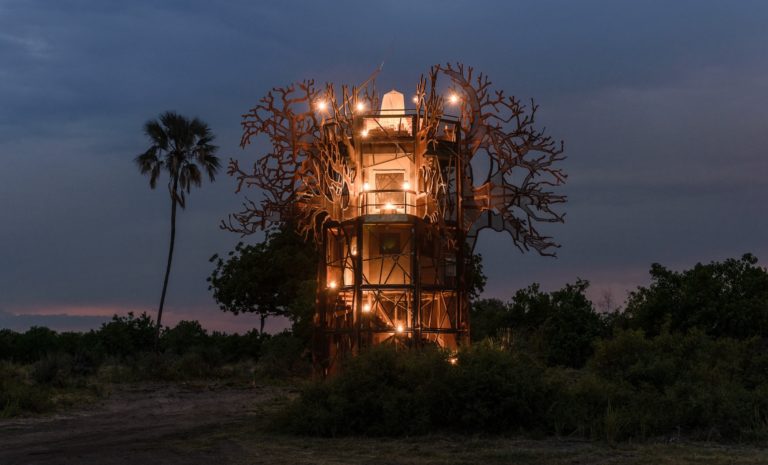
The Okavango Delta has benefited tremendously from Botswana’s policy of limiting visitor numbers by placing a substantial premium on concessions. That’s traditionally meant that you pay more for a safari in the Delta than in most other places – especially if you’re looking for luxury in the wilderness. Many of these once-in-a-lifetime lodges and camps are in hard-to-reach locations, which means you’ll also be clicking your tongue as you factor in the price of small plane hops to get to your priceless destination of choice (although fabulous Mack Air has set up scheduled services to bring costs down as much as is possible).
Daunting, too, can be trying to get your tongue around the names of many of these places. One look at “Xigera” on that brochure and you’d be hard-pressed to figure out that it’s pronounced “kee-jera”, which poetically refers to the pied kingfisher, and especially its mid-air hovering action just moments before it dives into the water. Xigera, a stalwart destination safari island in the Delta’s Moremi Game Reserve, reopened during the pandemic following one of the most exacting rebuilds ever to have happened in Africa.
xigera.com
You may have difficulty, too, pronouncing Xaranna, a Delta camp run by &Beyond that sleeps 18 in nine handsome safari tents each with a four-poster bed, an outdoor sala and a private plunge pool.
From $920 in low season to $1 925 in peak season
andbeyond.com
Wait for it … Camp Xakanaxa is pronounced Ka-ka-na-ka and has a prime location on the banks of the Khwai River, overlooking Xakanaxa Lagoon. Each of the 12 meru-style safari tents, one of which is a family tent that sleeps four, has a private deck with views over the lagoon (from $829 pp sharing). Another tongue-twister from Desert & Delta? Xugana Island Lodge, which is as easy on the eye as it is difficult to say out loud. Of course, once you arrive at any of these places, it won’t entirely matter how you pronounce them, will it?
desertdelta.com
Y is for YOLO!
In 2021, Zimbabwean Regina Manjoro became the oldest person to bungee jump off Victoria Falls Bridge at the age of 79. KAZA provides endless opportunities to tick things off your bucket list, many of which you should probably tick off before you push 80. Bungee jumping? Extreme white-water rafting? Overnight houseboat? Walking with big game? Helicopter ride? Luxury train ride? Microlight flip? A plunge in Devil’s Pool? Tiger fishing in the Zambezi? It’s the kind of place that makes you want to say yes to things.
Z is for Zambia’s Instagram town
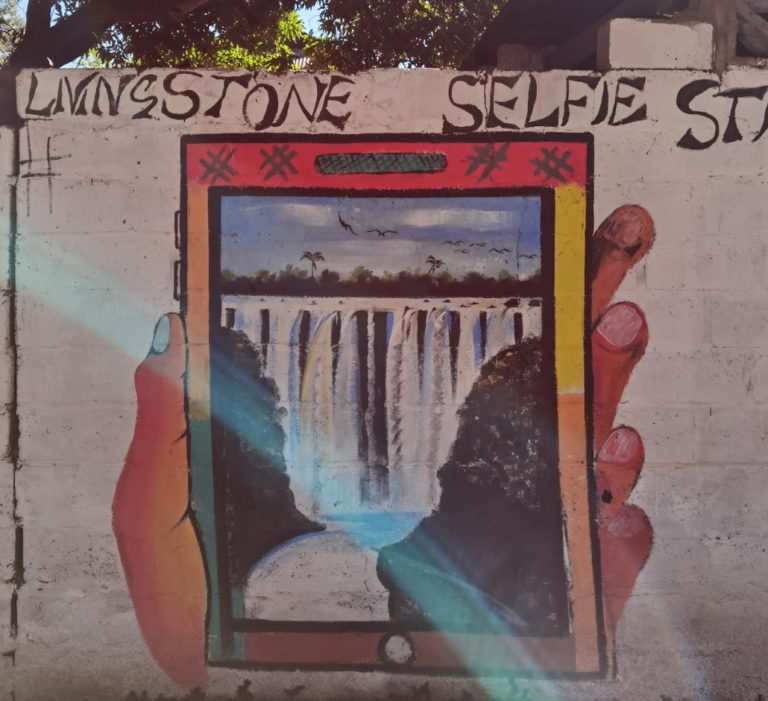
On a little road leading to Livingstone’s railway station, local artists have turned a stretch of a wall into a joyful interactive mural and named it “Selfie Street”. Snap a picture of your friends rowing a traditional dugout mokoro, posing as a butterfly or catching a croc! It’s a five-minute walk from the Mosi-oa-Tunya Square shopping complex. If you go on a Friday, don’t forget to dress up in chitenge, Zambia’s iconic colourful fabric. Buy some at a street-side fabric shop and get involved, Livingstone takes Chitenge Fridays very seriously.
This article originally appeared in the June 2022 print issue of Getaway
Photographs supplied
Follow us on social media for more travel news, inspiration, and guides. You can also tag us to be featured.
TikTok | Instagram | Facebook | Twitter
ALSO READ: 6 reasons to add Zambia to your 2023 bucket list
[ad_2]
Source link
Jarastyle – #KAZA
Courtesy : https://www.getaway.co.za/travel-ideas/the-a-to-z-of-kaza/

